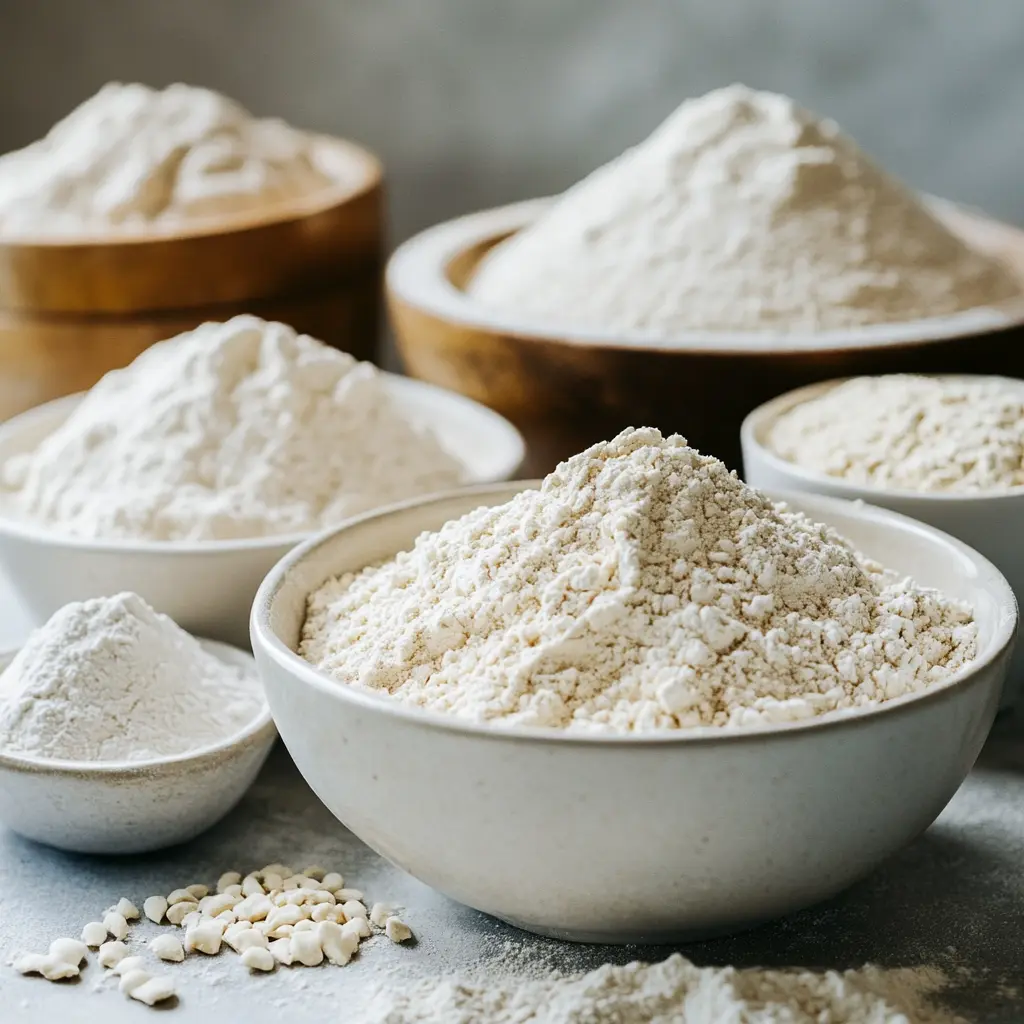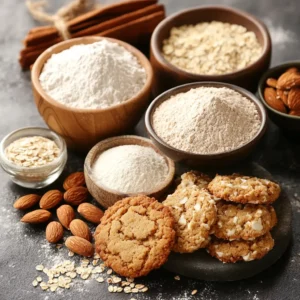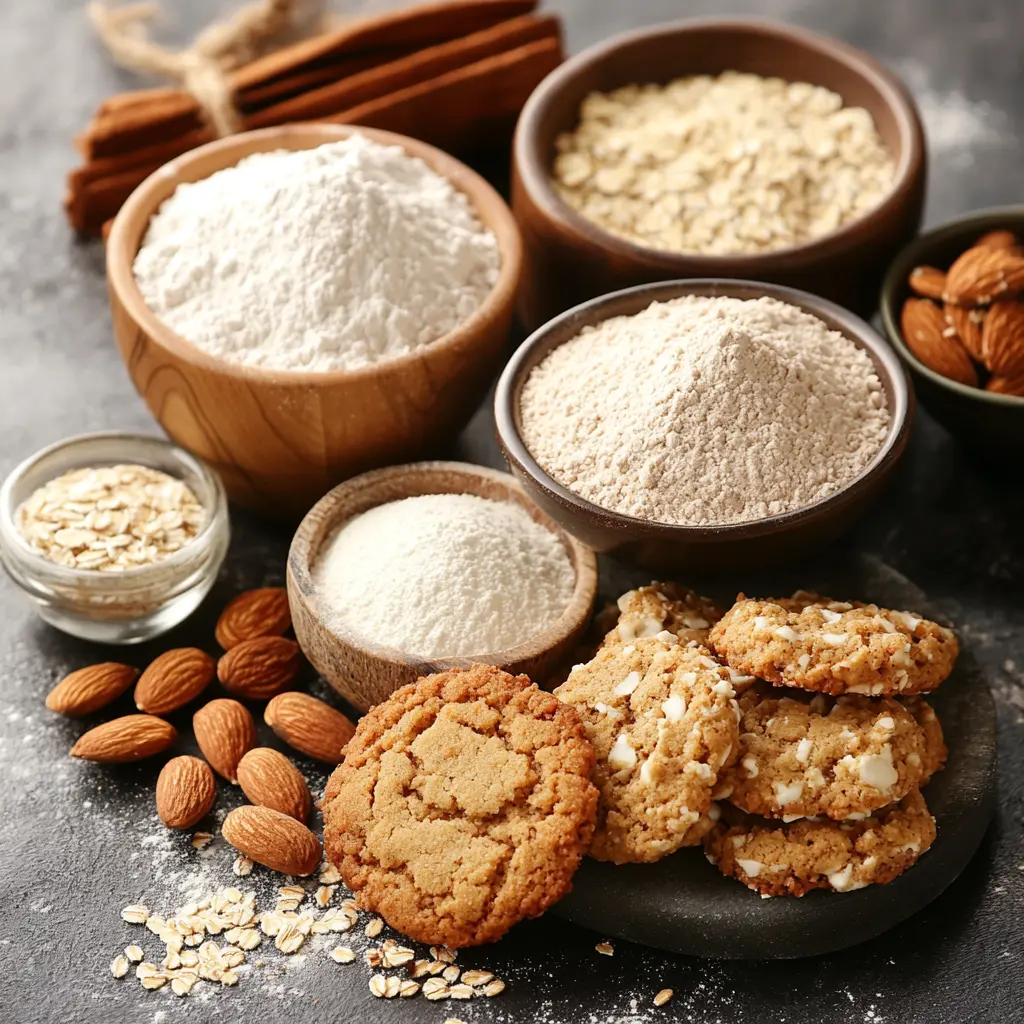Why Finding the Best Gluten-Free Flours for Cookies is Essential
For those embarking on the journey of gluten-free baking, finding the best gluten-free flours for cookie recipes can feel overwhelming. Cookies rely heavily on the right balance of texture, flavor, and structure, and gluten-free flours vary significantly in these characteristics. Selecting the right flour or blend can elevate your cookies to rival traditional recipes, making them delicious, chewy, and satisfying.
In this guide, we’ll explore the properties of various gluten-free flours, how to use them effectively, and tips for achieving the perfect gluten-free cookie. Whether you’re baking for dietary restrictions or experimenting with new ingredients, mastering the best gluten-free flours for cookies will transform your baking adventures.
The Role of Gluten-Free Flours in Cookie Baking
Traditional baking relies on gluten to provide structure, elasticity, and chewiness. Gluten-free baking, however, requires alternative approaches to replicate these qualities. The best gluten-free flours for cookies must balance these factors:
- Texture: Mimicking the structure provided by gluten.
- Flavor: Enhancing the taste without overpowering it.
- Binding: Ensuring the dough holds together.
By understanding the properties of different flours, you can confidently create cookies that not only meet dietary needs but also taste amazing.
Top 8 Best Gluten-Free Flours for Cookies
Below, we delve into the most effective gluten-free flours for cookie recipes. Each option offers unique benefits and considerations:

1. Almond Flour
Almond flour is one of the best gluten-free flours for cookies, known for its rich, nutty flavor and chewy texture. Made from finely ground almonds, this flour is naturally gluten-free and versatile.
- Best for: Chewy cookies like chocolate chip or snickerdoodles.
- Considerations: Almond flour is dense and may require additional binders
Use almond flour as the base for your next holiday treat by pairing it with this Gluten-Free Sugar Cookie Recipe
2. Coconut Flour
Coconut flour, made from dried coconut meat, is highly absorbent and imparts a subtle sweetness. Its unique texture makes it ideal for certain cookie recipes.
- Best for: Soft cookies like macaroons.
- Considerations: Requires more liquid than other flours due to its absorbency.
Looking for inspiration? Combine coconut flour with ideas from our list of 15 Delicious Cottage Cheese Recipes to Try Today
3. Rice Flour
Rice flour is a staple in gluten-free baking. Both white and brown rice flour are excellent options, with the latter offering a nuttier flavor.
- Best for: Neutral-flavored cookies or flour blends.
- Considerations: Can be gritty if not finely milled.
Pair rice flour with buttery toppings inspired by our New Orleans Shrimp and Grits Recipe
4. Oat Flour
Oat flour is made from finely ground oats and has a mild, sweet flavor. It’s a fantastic option for soft, tender cookies.
- Best for: Oatmeal cookies or recipes requiring a tender texture.
- Considerations: Ensure oats are certified gluten-free to avoid cross-contamination.
For a wholesome spin, consider oat flour when making recipes like our popular Gluten-Free Sugar Cookie Recipe
5. Sorghum Flour
Sorghum flour, derived from whole grain sorghum, is mild and slightly sweet. It’s often blended with other flours to enhance texture and flavor.
- Best for: Sugar cookies and shortbread.
- Considerations: Works best in blends rather than as a standalone flour.
6. Tapioca Flour
Tapioca flour, made from cassava root, is a starchy flour that mimics gluten’s elasticity. It’s a key component in many flour blends.
- Best for: Adding chewiness to cookie dough.
- Considerations: Should not be used as the sole flour in a recipe.
Explore new combinations by drawing from techniques in our New Orleans Barbecue Shrimp Recipe
7. Chickpea Flour
Chickpea flour, or garbanzo bean flour, is high in protein and offers a nutty flavor. It works well in denser cookies.
- Best for: Savory cookies or dense chocolate cookies.
- Considerations: The flavor may not suit all recipes.
8. Buckwheat Flour
Buckwheat flour, despite its name, is gluten-free. It has a bold, earthy flavor and works well in specific recipes.
- Best for: Rustic cookies like gingerbread or spice cookies.
- Considerations: Its strong flavor can overpower delicate recipes.
Blending Gluten-Free Flours for Cookies
While some gluten-free flours can stand alone, others work best in blends. Combining flours allows you to balance their strengths and weaknesses, creating the best gluten-free flours for cookies. Here’s how to craft a perfect blend:
- Mix a protein-rich flour (like almond or chickpea) with a starchy flour (like tapioca or potato starch).
- Add a neutral base (like rice or oat flour) to anchor the blend.
- Include a binding agent, such as xanthan gum or psyllium husk, for better dough structure.
For example, a common blend might include 60% rice flour, 20% almond flour, and 20% tapioca starch, plus a teaspoon of xanthan gum for every cup of flour.
Tips for Baking with the Best Gluten-Free Flours for Cookies
Successfully baking gluten-free cookies requires attention to detail. Here are some expert tips:
- Measure by weight: Use a kitchen scale for accuracy, as gluten-free flours vary in density.
- Hydrate the dough: Allow the dough to rest for 30 minutes to let the flours absorb moisture.
- Experiment with recipes: Start with established recipes and tweak to suit your preferences.
Recipes Using the Best Gluten-Free Flours for Cookies
1. Gluten-Free Chocolate Chip Cookies
These classic cookies use almond flour for chewiness and tapioca flour for structure.
- Ingredients: Almond flour, tapioca flour, butter, sugar, egg, chocolate chips, and xanthan gum.
- Instructions: Combine the ingredients, bake at 350°F for 12 minutes, and enjoy.
2. Oatmeal Raisin Cookies
These soft cookies use a blend of oat and rice flour for the perfect texture.
- Ingredients: Oat flour, rice flour, brown sugar, butter, raisins, and cinnamon.
- Instructions: Mix, bake, and let cool for a delicious treat.
Conclusion
Mastering the best gluten-free flours for cookie baking unlocks endless possibilities in your kitchen. By experimenting with different flours and blends, you’ll discover recipes that satisfy your cravings while meeting dietary needs. Whether you’re using almond flour, coconut flour, or rice flour, the key is to enjoy the process and savor the results. Happy baking!
Get started with a tried-and-true recipe like our Gluten-Free Sugar Cookie Recipe. Perfect for any occasion!

Best Gluten-Free Flours for Cookies
Ingredients
- Almond Flour Rich, nutty flavor, best for chewy cookies.
- Coconut Flour Subtle sweetness, highly absorbent, best for soft cookies.
- Rice Flour Neutral flavor, can be gritty if not finely milled.
- Oat Flour Mild, sweet flavor, good for tender cookies.
- Sorghum Flour Mild and slightly sweet, best for blending.
- Tapioca Flour Adds chewiness, not suitable as sole flour.
- Chickpea Flour Nutty flavor, good for savory or dense cookies.
- Buckwheat Flour Bold, earthy flavor, best for rustic cookies.
Instructions
- Mix a protein-rich flour (like almond or chickpea) with a starchy flour (like tapioca) and a neutral base (like rice or oat flour).
- Add a binding agent like xanthan gum for better dough structure.
- Measure by weight for accuracy, as gluten-free flours vary in density.
- Let the dough rest for 30 minutes to absorb moisture.
- Experiment with different blends to find your perfect cookie recipe.

